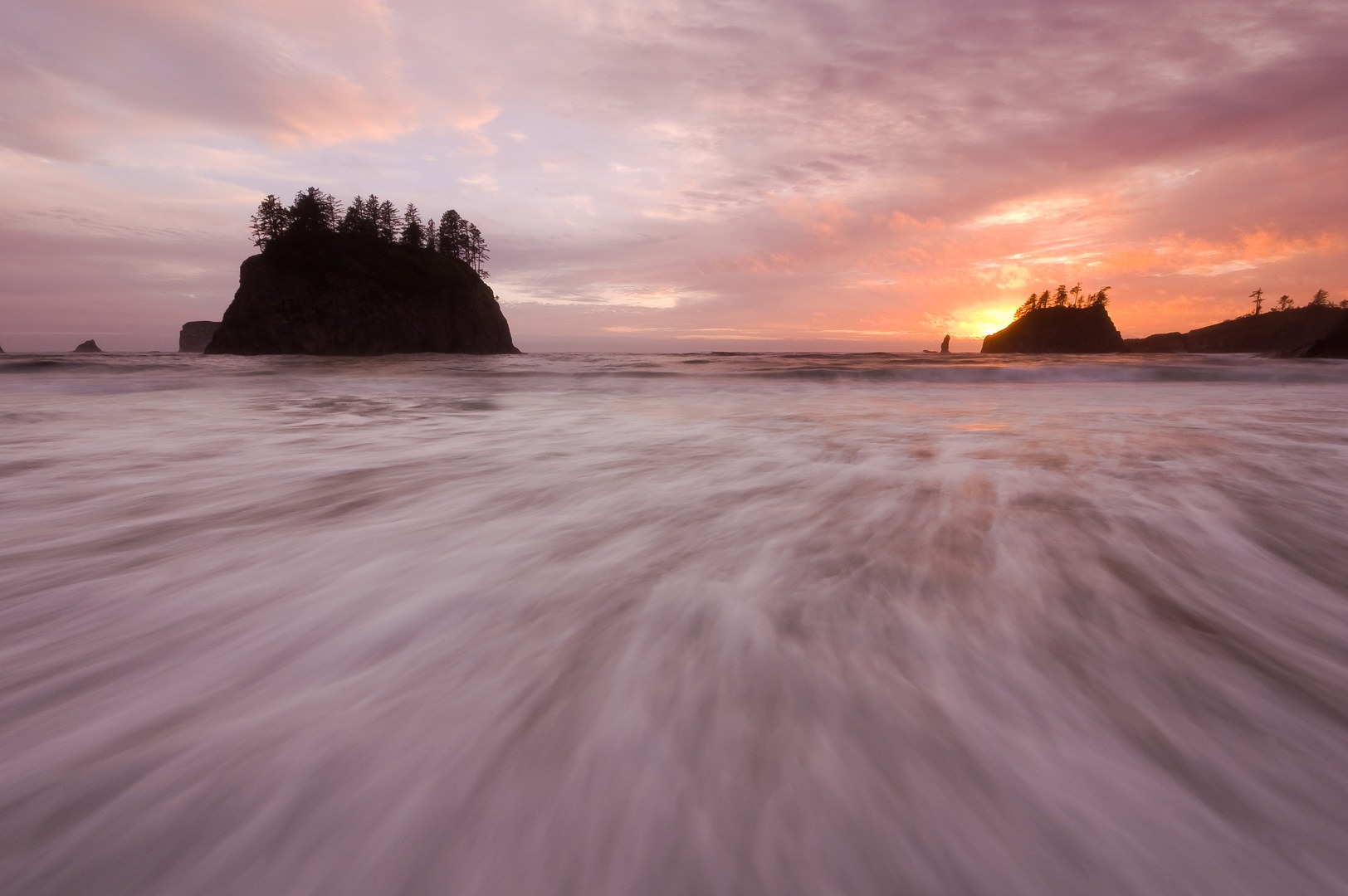Arguably one of the most scenic beaches on the entire Pacific Coastline of the United States, the tide pools, numerous stacks, and Quillayute Needles of La Push's Second Beach are exactly what most visitors hope to see when visiting Olympic National Park.
From the parking area off of La Push Road it's a 0.7-mile one-way jaunt on a well-maintained trail through Pacific Northwest coastal forest to make it all the way out to the popular yet secluded Second Beach. Once you are on the beach, Crying Lady Rock and the Quillayute Needles archipelago dominate the horizon. At low tide, venture north to explore the beach's shallow but abundant tide pools and to see the Natural Arch. Alternately, to avoid any other visitors, stroll southward along the beach for 1.5 miles to Teahwhit Head.
Quillayute Needles National Wildlife Refuge + Sea Otters
Easily seen as you look to the southwest, the Quillayute Needles archipeligo is cluster of dozens of small coastal islands that have been set aside as a critical wildlife refuge for more than 14 species of seabirds, sea lions, harbor seals and sea otters. Once prized for their fur, sea otters off the coast of British Columbia, Washington, Oregon and California were slaughtered to almost complete extinction. By 1911 only a small group survived in California before hunting was made illegal. In the late 1960s, sea otters from Alaska were re-introduced along the Washington and Oregon coastline. Today, Quillayute Needles, along with two other main refuges, Flattery Rocks and Copalis, comprise the larger Washington Maritime National Wildlife Refuge Complex, which protects more than 870 islands and reefs and is home to an estimated 800 sea otters.





















Comments
Sign In and share them.